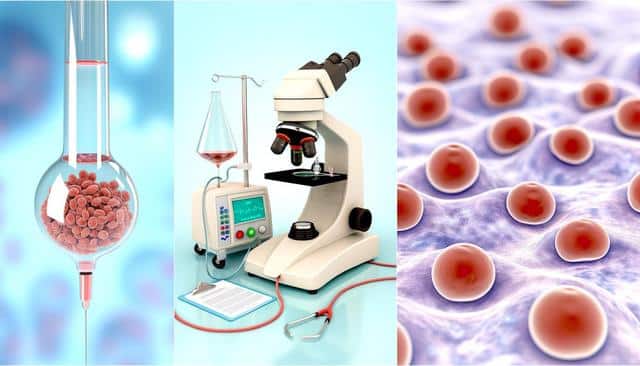Early Signs Often Overlooked
Early detection of leukemia is key to a successful outcome, yet many symptoms can be easily overlooked as they often resemble other less serious health issues. Common early signs include fatigue, fever, unexplained weight loss, and night sweats. Many people might dismiss these as symptoms of a common cold or flu. Other signs that could prompt further investigation include frequent infections, easy bruising or bleeding, and swollen lymph nodes. It is vital for individuals experiencing these symptoms to consult a healthcare provider to rule out leukemia and begin appropriate leukemia treatment if necessary. A few critical signs to keep at the forefront include:
- Persistent fatigue
- Repeated infections
- Unusual bleeding or bruising
- Swollen lymph nodes
Ignoring these symptoms can lead to a delay in diagnosis and more complicated treatment processes.
Diagnosing Leukemia
The process of diagnosing leukemia is thorough, often requiring a combination of medical history evaluation, physical examination, and specialized tests. Complete blood count (CBC) tests are one of the primary tools used, as they can reveal abnormal levels of white blood cells indicative of leukemia. Bone marrow biopsy is another essential diagnostic procedure that helps in confirming the diagnosis by allowing doctors to examine the marrow for cancer cells. Timely diagnosis is crucial, as it significantly impacts the effectiveness of leukemia treatment options. Recognizing common yet often ignored symptoms can lead to earlier testing and prompt diagnosis.
Leukemia Treatment Options
Once leukemia is diagnosed, selecting an effective treatment plan is paramount. The primary leukemia treatment methods include chemotherapy, which is used to target and kill cancerous cells, often accompanied by radiation therapy to eliminate residual disease. In some cases, a bone marrow transplant can replace damaged bone marrow with healthy cells, allowing for the production of normal blood cells. Treatment plans are typically customized to consider the type and stage of leukemia, as well as the patient’s overall health. The aim is to achieve remission, where the signs and symptoms of leukemia are absent, allowing the individual to lead a normal life as much as possible.
Supporting Those Undergoing Leukemia Treatment
Supporting someone undergoing leukemia treatment involves more than just addressing the physical symptoms. Emotional and psychological support plays a critical role in recovery and overall well-being. Patients might experience anxiety or depression, influenced by the stress of the diagnosis and treatment side effects. Healthcare providers often recommend counseling or support groups, which provide a space for patients to share their experiences and develop coping mechanisms. Additionally, family and friends can assist by helping to manage daily activities and ensuring regular clinic visits for monitoring and treatment updates. Providing a holistic support system can significantly enhance the effectiveness of leukemia treatment and improve the person’s quality of life. Key elements of supportive care include:
- Emotional and psychological support
- Assistance with daily activities
- Community support groups
These supportive measures, when combined with proper medical care, can greatly contribute to a patient’s recovery journey.

